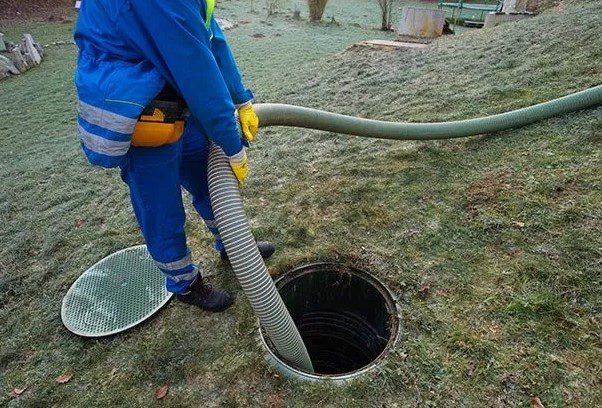Preventing Septic Backups: Essential Tips for Homeowners
Septic backups are a nightmare for homeowners, causing unpleasant odors, costly repairs, and potential health hazards. Preventing septic backups is essential for maintaining your plumbing system and avoiding significant disruptions. In this article, we will provide practical tips and guidelines to help you keep your septic system running smoothly and prevent backups from occurring.
What Causes Septic Backups?
Understanding Septic System Basics
A septic system is a crucial part of managing wastewater in a home, especially in rural areas where municipal sewage systems are unavailable. The system consists of a septic tank and a drain field that work together to treat and filter wastewater. The tank collects solids, while the liquid waste flows out into the drain field, where it is naturally filtered.
A septic backup occurs when wastewater cannot flow properly through the system, typically due to blockages or malfunctions in either the septic tank or the drain field. When the waste is unable to escape, it can result in unpleasant backups inside your home, causing damage to your plumbing and property.
Common Causes of Septic Backups
Several issues can lead to septic backups:
1. **Clogs in the Pipes or Drain Field:** Solid waste buildup or tree root intrusion can block the pipes leading to or from the septic tank.
2. **Overfilling of the Septic Tank:** If the septic tank is not pumped regularly, solids can accumulate and overflow into the drain field, causing blockages and backups.
3. **Excessive Water Use:** Using too much water at once can overwhelm the septic system, preventing it from processing waste properly.
4. **Improper Waste Disposal:** Flushing non-degradable items such as wipes, feminine hygiene products, and paper towels can cause blockages in the system.
Effective Ways to Prevent Septic Backups
1. Schedule Regular Septic Tank Pumping
One of the most effective ways to prevent septic backups is to schedule regular septic tank pumping. Over time, solids and sludge accumulate in the septic tank, reducing its capacity to treat wastewater. If the tank becomes too full, waste will flow into the drain field and create a backup.
– **How Often Should You Pump the Septic Tank?** Experts recommend having your septic tank pumped every 3 to 5 years, depending on the size of the tank and the number of people in your household. If you have a large family or use large amounts of water, more frequent pumping may be necessary.
– **Signs You Need Pumping Sooner:** If you notice slow drains, gurgling sounds, or unpleasant odors, these could be signs that your septic tank is full and needs pumping immediately.
2. Be Mindful of What You Flush
Flushing inappropriate items down the toilet or drain is one of the most common causes of septic backups. Non-degradable materials can clog the pipes, tank, and drain field, leading to blockages.
– **Avoid Flushing Wipes and Paper Towels:** Even if they are labeled as “flushable,” wipes and paper towels do not break down easily in the septic system. Always dispose of these items in the trash.
– **Never Flush Grease or Oil:** Grease and cooking oils solidify when cooled, creating a sticky mass that can clog your septic system. Pour oils and grease into a container and dispose of them properly.
– **Dispose of Hygiene Products Properly:** Feminine hygiene products, cotton balls, and diapers should never be flushed. These items do not break down in the tank and can create blockages.
3. Reduce Water Usage
Excessive water usage can overload your septic system, preventing it from effectively processing wastewater. When water flows into the septic tank too quickly, it can overwhelm the system and cause backups.
– **Conserve Water with Low-Flow Fixtures:** Installing low-flow toilets, showerheads, and faucets reduces water consumption and helps prevent the septic tank from filling up too quickly.
– **Space Out Laundry Loads and Showers:** If you have a large household, try to avoid running multiple water-intensive appliances (like washing machines and dishwashers) at the same time. Spacing out these activities gives your septic system enough time to process wastewater.
– **Fix Leaky Faucets and Toilets:** A leaking faucet or running toilet can waste hundreds of gallons of water per day, adding unnecessary strain to your septic system. Regularly check and repair leaks to save water and prevent septic overload.
4. Maintain the Drain Field
The drain field is where liquid waste is filtered and absorbed back into the soil. If the drain field becomes saturated or clogged, it can lead to septic backups. To prevent issues, take care of your drain field.
– **Keep the Drain Field Area Clear:** Avoid parking vehicles, planting trees, or building structures over the drain field. Heavy equipment and tree roots can damage the pipes, causing backups.
– **Direct Water Flow Away from the Drain Field:** Ensure gutters, downspouts, and sump pumps are directed away from the drain field. Excess water can saturate the soil, leading to poor filtration and possible backups.
– **Monitor the Drain Field for Wet Spots:** If you notice areas of standing water or unusually lush vegetation above the drain field, it could be a sign of a problem. Contact a professional to assess the situation and prevent further damage.
5. Use Septic-Friendly Cleaning Products

Many cleaning products contain harsh chemicals that can disrupt the natural bacterial processes in your septic tank. These chemicals can kill the beneficial bacteria responsible for breaking down waste, leading to a slower and less efficient septic system.
– **Opt for Natural Cleaning Solutions:** Use non-toxic, biodegradable cleaning products such as vinegar and baking soda, which are gentle on your septic system.
– **Avoid Anti-Bacterial Products:** While they are effective for cleaning, anti-bacterial products can harm the bacteria in your septic tank. Choose milder alternatives for household cleaning.
Signs of an Impending Septic Backup
Slow Drains and Gurgling Noises
One of the first signs of a potential septic issue is slow drainage in sinks, showers, or toilets. If water takes longer to drain, it could indicate a blockage in the pipes or a full septic tank. Gurgling sounds coming from your drains may also signal air pockets in the plumbing, which can be a sign of a clog.
Unpleasant Odors
A foul odor coming from your drains or the area around the septic tank is a warning sign of a backup. This odor indicates that wastewater is not flowing as it should and is backing up into the plumbing system.
Pooling Water Around the Septic Tank or Drain Field
If you notice standing water or puddles near your septic tank or drain field, it’s a clear sign that something is wrong. Saturation of the drain field can result in backups and may require professional inspection.
When to Call a Professional
While some septic maintenance tasks can be handled by homeowners, others require professional intervention. If you notice any of the signs mentioned above or if you’re unsure about your system’s condition, it’s essential to contact a licensed septic technician.
A professional can conduct regular inspections, pump the tank, and address any underlying issues before they become major problems.
Conclusion
Preventing septic backups is essential for keeping your plumbing system running smoothly and avoiding costly repairs. By following these preventive measures—such as scheduling regular septic tank pumping, using water efficiently, and disposing of waste properly—you can help ensure that your septic system remains in good working condition. Keep an eye out for warning signs of issues and don’t hesitate to call a professional when needed. A little maintenance can go a long way in preventing septic backups and extending the life of your system.

